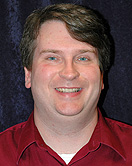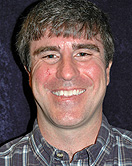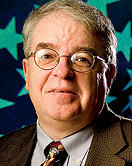News
UB experts weigh in on election
The 2012 presidential election remains very close, and the mechanisms of prediction aren’t always satisfying. This is one year in which this is the case, says James Battista, assistant professor of political science.
“Forecasting models based on different conceptions of the ‘fundamentals’ of presidential elections agree that the election will be close, but they do not agree on the winner,” he says.
Harvey D. Palmer, associate professor and chair of the Department of Political Science, has a somewhat different take on the issue.
“The competitiveness of the presidential election makes it difficult to distinguish punditry from partisanship,” he says.
“Yet, political science research finds that most voters decide how they will vote well before the campaign’s last week. So from a scientific perspective,” he says, “what will likely matter most in understanding the outcome on Tuesday is not what happens in the final week, but rather which scholarly interpretation of the current state of the race is more accurate.
“There are essentially two distinct interpretations,” Palmer explains. “The ‘statistical’ perspective, based on Bayesian statistical modeling of the state-level poll, averages argues that the race is essentially over because Obama is too far ahead in too many of the battleground states.
“The Romney campaign appears, though, to disagree with this conclusion, since their decision to increase spending in Pennsylvania and Minnesota this week ignores the Bayesian forecasts that these states are nearly unwinnable,” he says, “while embracing the ‘journalistic’ view (based on a simple moving average of the polls) that the race is tied, if not trending in Romney’s favor.
“Scholars adopting this journalistic interpretation speculate that most of the polls are biased in Obama’s favor due to overweighting Democrats, and question the statistical expectation that Obama will perform better in the Electoral College than in the popular vote, contrary to the historical trend for Democrats (e.g., Gore in 2000),” Palmer says. “Thus, the election outcome will serve as a critical test of whether statistical modeling is the most reliable approach to interpreting presidential polls.”
Battista notes that after a September dominated by strong Obama polling and an October dominated by his poor performance in the first debate, “the last week’s election polls have returned to about the levels predicted by the fundamentals a few months ago. The best we can say is that we’re ‘highly confident’ that the outcome is uncertain, if not as uncertain as a coin flip,” he says.
James Campbell, professor of political science who is nationally regarded for his successful forecasting models, agrees that the outcome remains uncertain.
“The fundamental forces shaping presidential elections are closely balanced this year,” he says, “with an electorate that is at near parity in partisanship, with nearly as many Republicans as Democrats, and both groups highly polarized ideologically.
“For their parts, the candidates have offsetting strengths and weaknesses,” says Campbell.
“President Obama has incumbency going for him. Historically, about three out of four incumbent presidents win their re-election attempts and it is rarer still for a first-term presidential party to lose.
“On the other hand,” he says, “the president is burdened by a very weak economic record. Of the 10 presidents seeking re-election since 1956, only two (G.H.W. Bush and Ford) had overall weaker economic records (mean real GDP growth, not counting their first year) and only one (Carter) entered the fall campaign with a weaker economy. The economy is clearly on Romney’s side of the ledger and explains, at least in part, his rise in the polls after the first debate.”
“While poll aggregators like Nate Silver or the Princeton Election Consortium are making more confident predictions of an Obama victory, they’re playing a different game,” Battista says. “They take the latest information, project it forward, then make the unremarkable claim that next week’s election will look a lot like recent polling.
“In contrast, academic forecasters like Jim Campbell and Alan Abramowitz attempt to isolate a few key causal factors well in advance,” he says.
Campbell adds that with the fundamentals roughly balanced, “the key to the election would seem to be whether undecided swing voters are willing to give the president an ‘incomplete’ on the economy and whether it is Democrats or Republicans who are more energized to turn out this year.”
Political geography also is crucial, he points out.
“It is clear that the outcome of the election will depend on what happens in a handful of hotly contested battleground states, “ Campbell says, “including Florida, Ohio, Virginia, Wisconsin, Colorado, Iowa, New Hampshire and Nevada. The election is not close in New York, so it doesn’t make the list.”
And what about the effects of Hurricane Sandy?
“There is simply no good data to turn to in this regard,” Battista says. “There does not seem to have ever been a major hurricane shortly before an election.
“If Election Day is dominated by unpleasant weather in the East, it will probably reduce turnout, especially Democratic turnout, but many people in battleground states have already voted and are, therefore, unaffected,” he says. “Many have and will make reasonable guesses about Sandy’s effects, but these remain only guesses.”




Reader Comments